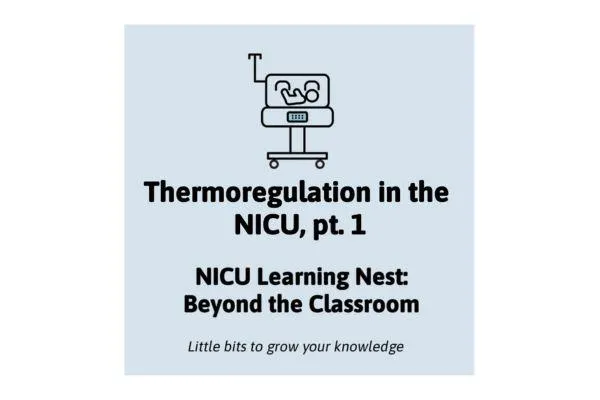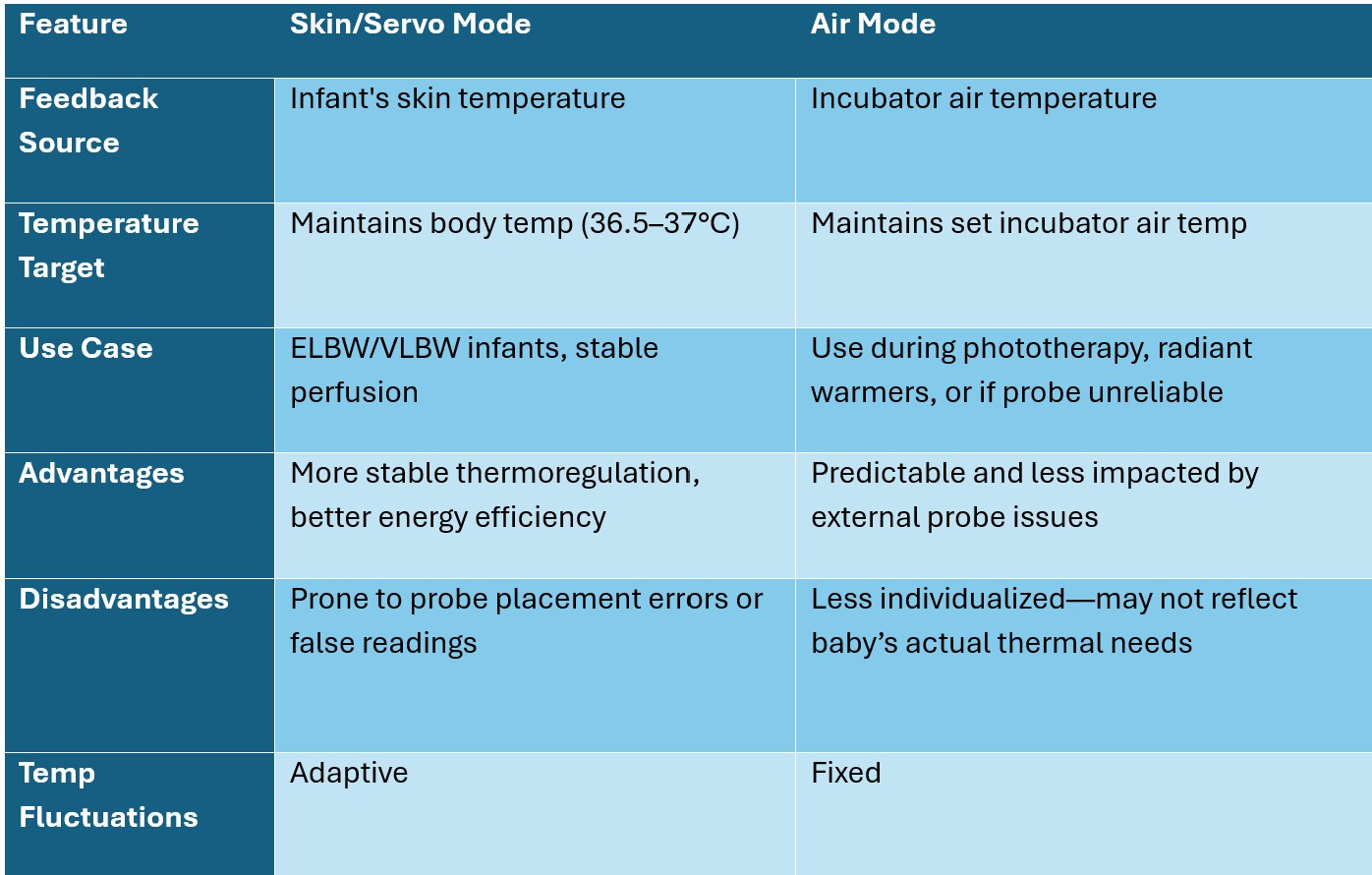
Thermoregulation in the NICU part 1
Keeping Warm: Thermoregulation in the NICU (Part 1)
Thermoregulation is one of the most fundamental—and fragile—physiological processes in the neonatal period. For NICU teams, maintaining a stable thermal environment isn’t just about comfort; it’s about survival. For our smallest and most premature infants, even a drop in temperature can cascade into a series of harmful events: hypoglycemia, acidosis, hypoxemia, increased oxygen demand, and impaired weight gain.
This week’s Teach Me Tuesday post explored the critical foundations of neonatal thermoregulation and the unique vulnerabilities of extremely low birth weight (ELBW) infants. Let’s recap the essentials—and go a little deeper.
Cold Stress Is No Small Thing
Newborns lose heat rapidly after birth, and preterm infants are especially at risk due to their large surface area-to-weight ratio, thin skin, and lack of brown fat. Cold stress occurs when a baby’s body uses too much energy trying to maintain normothermia, resulting in metabolic acidosis, respiratory distress, and worsening outcomes. Prevention, not reaction, is key.
Why ELBW Infants Are So Vulnerable
For ELBW babies, heat loss can begin within seconds of birth and progress quickly. Their skin is paper-thin and often immature, making it difficult to maintain barrier protection. Even their tiny movements increase convective heat loss. That’s why these babies benefit most from incubators with humidity, servo-controlled heating, and skin protection strategies from minute one.
How Babies Lose Heat
The four primary mechanisms of neonatal heat loss are:
Evaporation – moisture on the skin evaporates, pulling heat with it
Conduction – contact with a cold surface (e.g., scale, mattress)
Convection – heat loss to cooler air moving around the body
Radiation – heat lost to nearby cold surfaces not in direct contact
Each type of heat loss requires thoughtful prevention. From warm blankets and chemical warming mattresses to warm ambient air and plastic wraps, our interventions must match the infant’s physiologic need.
Humidity: Not Just for Skin Integrity
In the first 7–14 days of life, especially for babies <28 weeks, humidity plays a crucial role. It reduces transepidermal water loss, prevents evaporative heat loss, and helps maintain skin integrity. Research supports the use of 70–90% humidity in the first week, tapering down slowly as skin matures.
Incubators vs. Radiant Warmers
Incubators and radiant warmers serve different purposes:
Radiant warmers provide open access and infrared heat, ideal for resuscitation or procedures but increase evaporative and radiant heat loss.
Incubators create a controlled, enclosed environment that maintains temperature, minimizes convective loss, and allows for humidity.
Skin/Servo Mode vs. Air Mode
This is where many teams get confused. In servo mode, the incubator responds to the baby’s skin temperature, adjusting the environment based on feedback from a skin probe. In air mode, the incubator maintains a fixed air temperature, regardless of the baby’s body temp.
So, which is better? It depends.
Servo (skin) mode offers more precise temperature regulation based on the infant's needs. It’s been associated with better outcomes in ELBW infants, such as lower energy expenditure and improved growth.
Air mode may be preferred in certain scenarios—phototherapy, unstable skin probe readings, or when minimizing external interference is a priority.
But it’s not just about choosing one mode over the other—it’s about knowing how to use them safely.

Troubleshooting Servo Mode: A Few Practical Pearls
Sometimes your incubator alarms that the baby is cold, but the skin feels warm. Or the temperature fluctuates wildly despite a seemingly accurate skin probe. Here’s what might be going wrong:
Probe placement: Avoid bony prominences or areas near the heat source. Mid-abdomen or flank is typically ideal (ribs are bones...do not forget that!).
Secure attachment: Loose sensors give erratic readings. A patch with reflective backing can prevent external heat absorption, but it must be monitored closely.
Environmental interference: Overhead phototherapy or radiant heat can falsely elevate probe readings.
Skin condition: Fragile skin can cause sensor slippage or lead to overcompensation by the incubator.
If servo mode readings don’t match your clinical assessment, double-check everything from the probe to the baby’s actual temperature and consider switching to air mode temporarily while you troubleshoot.
Stay tuned for Part 2 next week, where we’ll dive into parent education, recognizing and managing cold stress at the bedside, and practical tips for transitioning babies out of incubators safely.
As always, small actions and strong fundamentals can lead to better outcomes for our tiniest patients. Keep asking questions. Keep learning. Your knowledge is heat.
